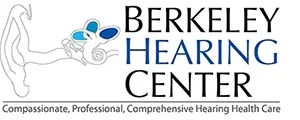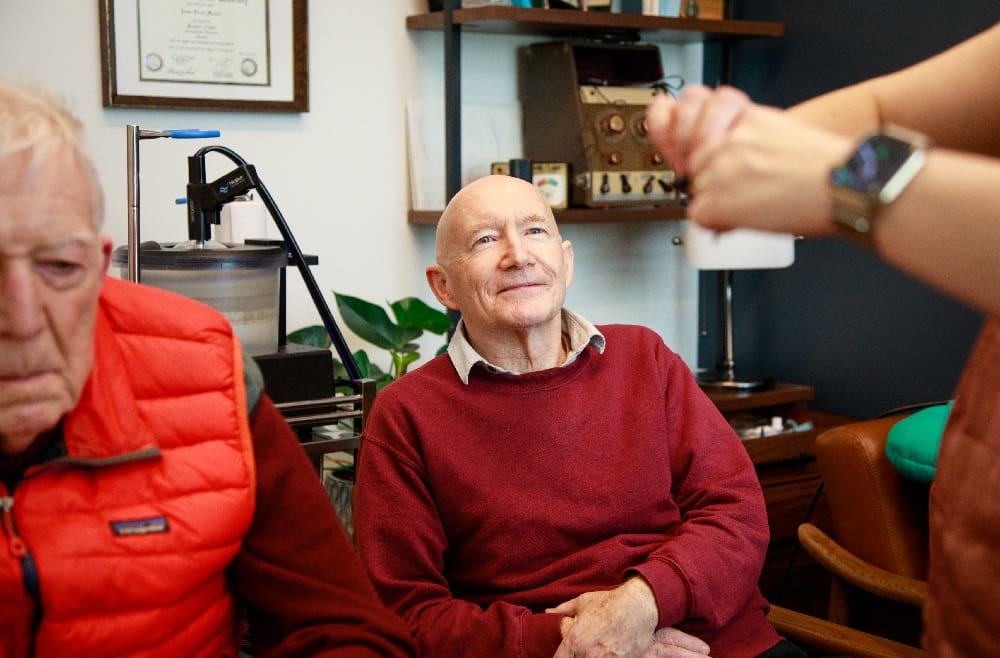2021-03-10
Jonathan Lipschutz Audiologist, M.S., F-AAA, Co-Owner
Part I of this series on ‘expectations’ was about educating patients about their condition and what they can realistically expect from the highest level of care and available treatment options. Part II was specifically about expectations related to the auditory experience of hearing the world again when using amplification for the first time. But what about sounds that we make ourselves, such as our own voice or chewing noises? And what about the physical side of things?
Apart from our face, possibly our most self-identifying aspect is our own voice. How we hear ouselves is integral and unique to each of us. So any change in how we hear ourselves can have a visceral effect.
When we speak, we hear our voice in two different ways. We hear the sounds everyone else hears, but we also hear ourselves via sound vibrations conducted through the skull. Our inner ear or cochlea is encased in the temporal bone portion of our skull. It’s this bone conducted sound that gives each of us the unique perception of our own voice. That's why it’s so weird to hear our own voice recorded. We’re missing those bone conducted sounds and that’s not how we hear ourselves, though ironically, it’s how everyone else does.
So when it comes to wearing hearing aids, by definition, we are changing the user’s perception of sound by giving them back sounds they can’t hear naturally. Just by virtue of providing appropriate amplification, the user’s voice may sound strange to them. Typically, this manifests as sounding “tinny”, “microphony”, “metallic”-the subjective perception of high frequency sound, which is the most important area we amplify. In addition, in-the-ear/ITE hearing aids (or custom ear molds for behind-the-ear/BTE models) can cause an issue referred to as "occlusion"-like when you have a cold or you plug your ears and your voice resonates in your head.
Sounds that we generate internally that typically roll out of the ear (chewing noises, speech, even breathing), get trapped and resonate in the head. A small amount of occlusion is perfectly normal, and the brain can acclimate to it. However, physical modifications of the hearing aid(s)/mold(s) may be needed to address the cause of the occlusion issues. Strangely, ‘occlusion’ issues can also be caused by improper amplification settings. So talking with your Audiologist about what you are experiencing, and providing them with as much information/detail as possible, will help identify the cause(s) so they can be addressed correctly.
But what about the physical side of wearing hearing aids. They are being worn in a particularly sensitive part of the body. When properly fit, hearing aids should be very comfortable, to the point that most users don’t typically don’t even know they’re wearing them. Most physical fit issues are very minor. The most common one we hear is itchiness. It’s typically temporary with the ear adjusting pretty quickly, and is seen particularly with fittings where we use non-custom tips.
A more pressing issue (pun intended) we come across is with custom aspects of a fitting, ITEs or BTE custom earmolds. These custom products are based on impressions taken from the patient’s own ears and should fit like puzzle pieces. But like with any prosthetic, the aid or mold may not fit correctly at first. A poorly fitting mold isn’t necessarily an indication that it was made incorrectly. There’s both a science and an art to making these custom products. The impression of the ear(s) we take is a static impression of a very dynamic system. With jaw movement, sometimes the aid or mold presses or rubs an area it isn’t intended to. Or if the user doesn’t properly insert it, it may also press a part of the ear, causing a sore.
When it comes to the physical fit issues, they almost always manifest within the first few days. Minor initial discomfort will often quickly improve. If it doesn’t, I beg my patients to contact me immediately as it won’t improve without my intervention.
As with the subjective perception of the amplification, your ears may need some time to adjust to the physical side of wearing amplification. Some people adjust within days, and others may take more time to fully acclimate. But as with just about all issues associated with hearing aids, if the Audiologist knows about the problem, they should be able to address it. When properly fit though, hearing aids should be very comfortable in how they feel and sound.
Keep looking out for your neighbors by wearing masks and distancing when appropriate. And please continue to support your local businesses.
https://berkeleyhearing.com/wp-content/uploads/2024/10/Ready-to-improve-your-hearing-experience.jpg
Jonathan Lipschutz Audiologist, M.S., F-AAA, Co-Owner






